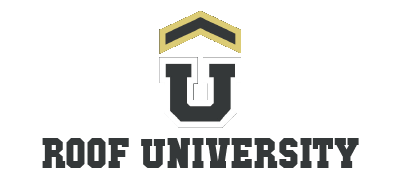HVAC (Heating, Ventilation, and Air Conditioning) systems are essential for maintaining a comfortable and energy-efficient indoor environment. These systems often require roof penetrations to install vents, exhausts, or ductwork. While necessary, HVAC-related roof penetrations are particularly vulnerable to water infiltration if not installed and maintained correctly. This page explores how HVAC systems intersect with roof design and the best practices to protect these critical areas.
Common HVAC Roof Penetrations
- Exhaust Vents:
- Allow warm or stale air to escape from heating or air conditioning systems.
- Often include metal or PVC piping that passes through the roof.
- Intake Vents:
- Provide fresh air to the HVAC system for proper functioning.
- Ductwork:
- Roof-mounted HVAC units often require duct penetrations to connect the system to interior spaces.
- Flue Pipes:
- Exhaust flues for furnaces or water heaters are commonly routed through the roof.
- Designed to handle high temperatures and prevent backflow of gases.
Challenges of HVAC Roof Penetrations
Roof penetrations for HVAC systems present unique challenges, including:
- Water Infiltration: Poorly sealed or damaged penetrations can allow water to seep into the roof deck.
- Thermal Expansion: HVAC components, such as flues and ducts, expand and contract with temperature changes, stressing seals and flashing.
- Wind and Weather Damage: Roof-mounted HVAC equipment can shift or vibrate, affecting the stability of penetrations.
- Debris Accumulation: Leaves, dirt, or ice can block vent openings, leading to system inefficiency and roof damage.
Protective Components for HVAC Roof Penetrations
- Flashing:
- Metal or synthetic flashing is installed around HVAC penetrations to direct water away from the joint.
- Flashing types include step flashing, pipe flashing, and custom-fabricated options for unique HVAC setups.
- Sealants:
- High-quality, weather-resistant sealants are used to reinforce flashing and close gaps.
- Essential for maintaining a tight seal against water and air leaks.
- Pipe Boots and Collars:
- Flexible components that create a snug, watertight fit around ducts, pipes, and vents.
- Roof Curbs:
- Prefabricated structures that provide a stable, raised base for HVAC units.
- Prevent direct contact between the roof surface and heavy equipment, minimizing roof stress.
Best Practices for Installation
- Proper Placement: Ensure penetrations are located in areas that minimize water pooling and ice dam formation.
- Secure Fastening: All HVAC components and their associated penetrations should be firmly attached to the roof structure to withstand vibrations and wind.
- Weatherproof Integration: Flashing and roofing materials should be layered correctly to ensure water flows over, not under, the materials.
- Use Professional Installers: HVAC penetrations involve complex systems that require expertise to ensure proper sealing and alignment.
Maintenance and Inspection Tips
- Regular Inspections: Check HVAC penetrations for signs of wear, such as cracked sealants, rusted flashing, or gaps.
- Debris Removal: Clear away any debris that could block vents or cause water to pool around penetrations.
- Reapply Sealants: Sealant around HVAC penetrations should be checked and refreshed periodically to maintain a watertight seal.
- Monitor HVAC Equipment: Vibrations from HVAC units can loosen components, so regular maintenance is essential.
- Replace Damaged Components: Address any issues with flashing, boots, or duct seals promptly to prevent leaks.
Signs of Issues with HVAC Roof Penetrations
- Water Leaks: Water stains on ceilings or walls near HVAC vents can indicate penetration problems.
- Energy Inefficiency: Leaks around penetrations can cause air loss, reducing the system’s efficiency.
- Rust or Corrosion: Metal flashing or ductwork exposed to moisture may degrade over time.
- Noise or Vibration: Loose HVAC components can stress roof penetrations and compromise their seals.
Importance of Proper HVAC Roof Penetrations
HVAC-related roof penetrations require careful attention during installation and ongoing maintenance. When properly sealed and maintained, these penetrations ensure the HVAC system operates efficiently without compromising the roof’s integrity. Neglecting these areas can lead to costly repairs, water damage, and decreased energy performance.
Understanding the unique demands of HVAC penetrations and following best practices can help protect both the roofing system and the HVAC equipment for years to come.
